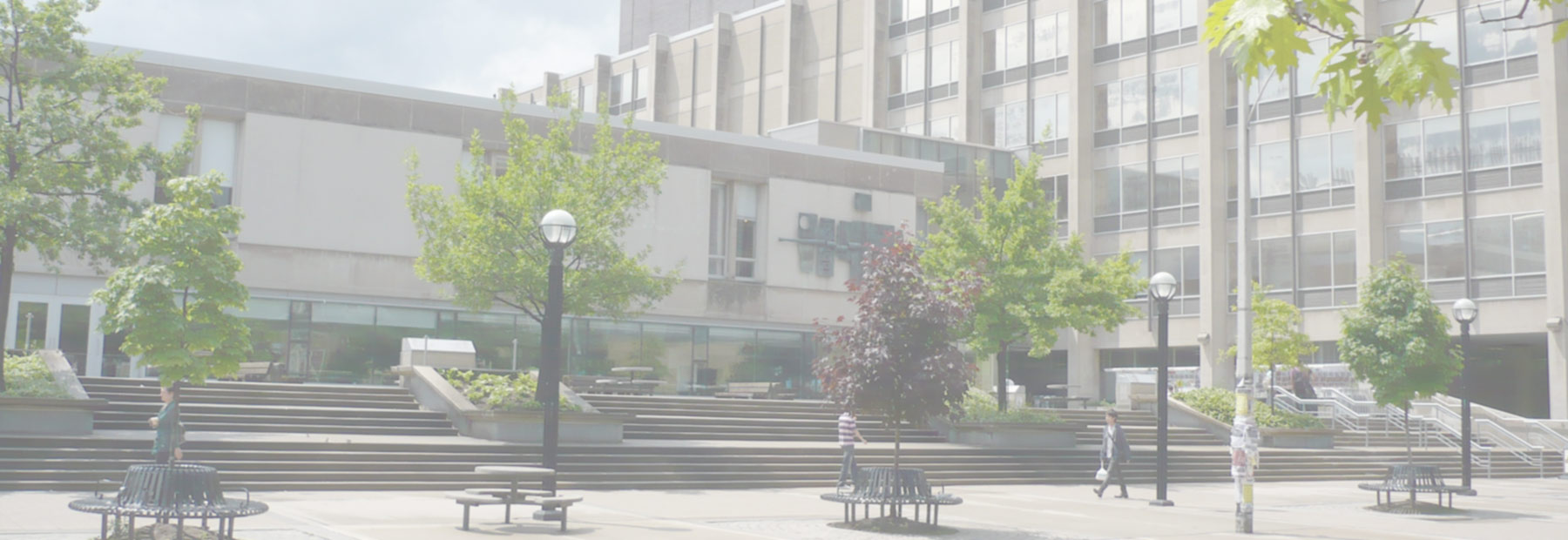“We spend about ninety per cent of our lives indoors, and the majority of the other ten per cent is spent commuting between indoor spaces,” said Professor Oshin Vartanian at the first-ever Toronto Aesthetic Sciences Conference.
That’s why it’s so important to understand our architectural preferences and what we find beautiful, Vartanian explained.

The conference brought together dozens of scientists who work in empirical aesthetics—at the intersection of psychology and neuroscience. It was organized by Professor Dirk Bernhardt-Walther with support from University College and the Department of Psychology.
Vartanian, an associate professor in the Department of Psychology who is appointed to Defence Research and Development Canada, delivered one of the keynote addresses.
Vartanian began by pointing out that one of the best-established psychological phenomena is that people tend to prefer curvature to angularity—a finding that goes back over 100 years. Early studies found that curved lines made people feel comfortable and safe, and that they thought them to be softer and more approachable.
“More contemporary studies have been done where people were shown line drawings, abstract shapes, real or imaginary objects—of course, in Germany they had a study of car interiors—and all of these repeatedly show that people tend to prefer curvilinear designs,” Vartanian says.
This preference has been shown to extend to infants, across cultures, and even among great apes. When asked why they prefer curvature to angularity, participants have used affective language, saying that they find curvature to be more pleasurable.
Vartanian’s work builds upon this foundation to reveal which areas of the brain are engaged in making aesthetic judgements and perceiving curvature.
One study asked participants to consider curvilinear architectural spaces and angular spaces while in an fMRI scanner and decide whether they find them beautiful or not. The anterior cingulate cortex, one of the regions of the brain that falls within its core affective system, lights up during this task.
Another finds that while making beauty judgements, regions of the brain in the fusiform gyrus are particularly sensitive to architectural scenes participants perceive to be curvy. Those brain regions are also involved in higher-order visual processing like object recognition and processing faces.
It’s still unclear how the perception of curvature translates into such a preference and the feelings of comfort, safety, and approachability that a curved line or object may inspire. That’s what Vartanian hopes scientists can uncover next.

The Toronto Aesthetics Sciences Conference spanned several areas of empirical aesthetics, including what synaesthesia reveals about aesthetic preferences, how we look at human- versus AI-generated scenes and paintings, how the art of dance preserves functions in those with Parkinson’s disease, and how teen manga reading predicts fewer peer problems in adulthood.
Attendees also toured the art collection at Simcoe Hall, which currently features contemporary photography from some of the most respected Indigenous artists in Canada. These photographs are displayed on the walls of Simcoe Hall, which are usually adorned by traditional portraits of former university presidents. The art tour allowed attendees to experience some of the aesthetic moments that were the object of the scientific program of the conference.


